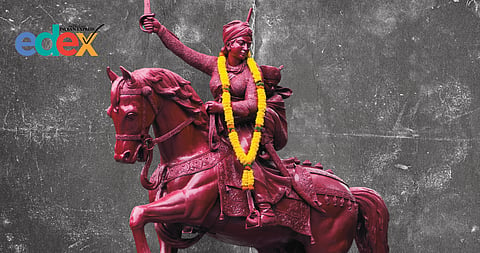

History often places Rani Lakshmibai of Jhansi on a marble pedestal and sees her as the brave queen on horseback, sword in hand, infant son tied to her back, the perfect nationalist icon of 1857.
We celebrate her as the spark of rebellion against the British, yet we quietly smooth away the sharper edges of her story...that long before she became a symbol for the nation, she had already shattered every rule written for women of her time.
Manu, as she was born, refused the quiet life scripted for a high-caste girl in Varanasi. She learnt to read, write, ride and wield weapons at a time when most women of her station were expected to remain inside the antahpur (women's quarters).
When she married Raja Gangadhar Rao of Jhansi in 1842, she did not become the silent consort behind the throne, or just be her husband's aide.
She reclaimed her position as she sat in durbar, advised on state matters, and trained in the palace grounds alongside the soldiers. When the Raja fell ill, and the British refused to recognise their adopted heir under the infamous Doctrine of Lapse, it was Lakshmibai who took the reins of administration. Long before the bugles of 1857 sounded, she had already stepped far beyond the boundary drawn for a Hindu upper caste widow.
And then came the uprising. While many princely states wavered or sided with the East India Company, the Rani chose the battlefield. She did not wait in the antahpur for protection...she raised, trained and led her own army.
She fought in armour tailored for her frame, commanded artillery, and rode into the thick of cannon fire on the battlefield. When British officers wrote dispatches describing the “Ranee” personally leading charges, they were not indulging in oriental fantasy; they were reporting the uncomfortable truth that a woman was outgeneralling them.
This is where our understanding of her must deepen. Lakshmibai did not fight because her husband told her to; her husband was already dead. She did not fight to stand obediently behind a man, as some textbooks still simplify it.
She fought because the land she governed, the people she felt responsible for, and the dignity she refused to surrender were hers to defend. That is the essence of feminism: not waiting for permission, not asking to be saved, but reclaiming the right to shape your own destiny with whatever weapon circumstance places in your hand.
We love to call her Devi, to wrap her in the safe glow of divinity, because goddesses can be worshipped from a distance. But the real Rani was flesh and blood, a widow who refused suttee (sati), a queen who refused annexation, a woman who refused the script that said her war was someone else’s.
Every time we place women only on pedestals (whether as Bharat Mata or self-sacrificing mother), we repeat the old violence of telling them their place is to inspire men, never to fight alongside them or ahead of them.
On her 191st birth anniversary, let us remember the woman who rode into battle not as an exception granted by history, but as proof that the desire to stand one’s ground has always burned in women, too.
Rani Lakshmibai did exactly that, and 168 years after her martyrdom, her hoofbeats still remind us: the front line has never been reserved only for men. Some women were born to gallop straight into it.
